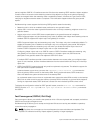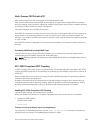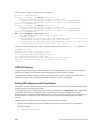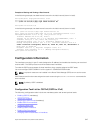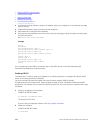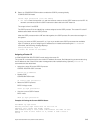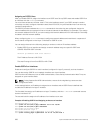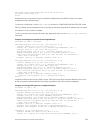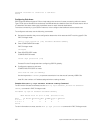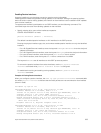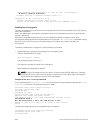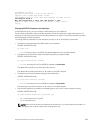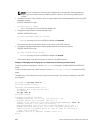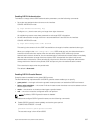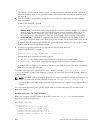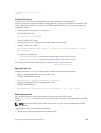
Loopback interface is treated as a stub Host.
Dell#
Configuring Stub Areas
OSPF supports different types of LSAs to help reduce the amount of router processing within the areas.
Type 5 LSAs are not flooded into stub areas; the ABR advertises a default route into the stub area to which
it is attached. Stub area routers use the default route to reach external destinations.
To ensure connectivity in your OSPFv2 network, never configure the backbone area as a stub area.
To configure a stub area, use the following commands.
1. Review all areas after they were configured to determine which areas are NOT receiving type 5 LSAs.
EXEC Privilege mode
show ip ospf process-id [vrf] database database-summary
2. Enter CONFIGURATION mode.
EXEC Privilege mode
configure
3. Enter ROUTER OSPF mode.
CONFIGURATION mode
router ospf process-id [vrf]
Process ID is the ID assigned when configuring OSPFv2 globally.
4. Configure the area as a stub area.
CONFIG-ROUTER-OSPF-id mode
area area-id stub [no-summary]
Use the keywords no-summary to prevent transmission into the area of summary ASBR LSAs.
Area ID is the number or IP address assigned when creating the area.
Example of the show ip ospf database database-summary Command
To view which LSAs are transmitted, use the show ip ospf database process-id database-
summary command in EXEC Privilege mode.
Dell#show ip ospf 34 database database-summary
OSPF Router with ID (10.1.2.100) (Process ID 34)
Area ID Router Network S-Net S-ASBR Type-7 Subtotal
2.2.2.2 1 0 0 0 0 1
3.3.3.3 1 0 0 0 0 1
Dell#
To view information on areas, use the show ip ospf process-id command in EXEC Privilege mode.
652
Open Shortest Path First (OSPFv2 and OSPFv3)



